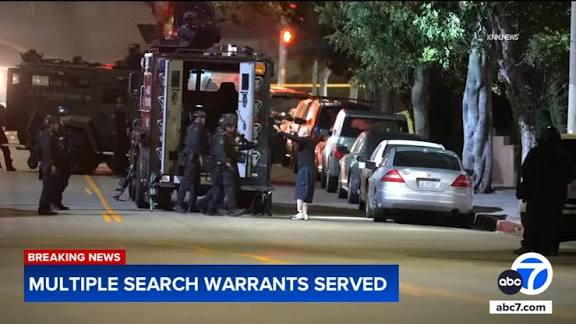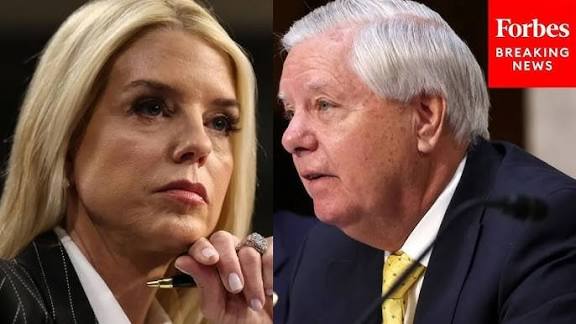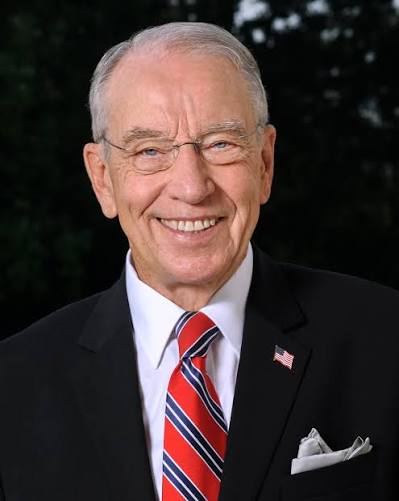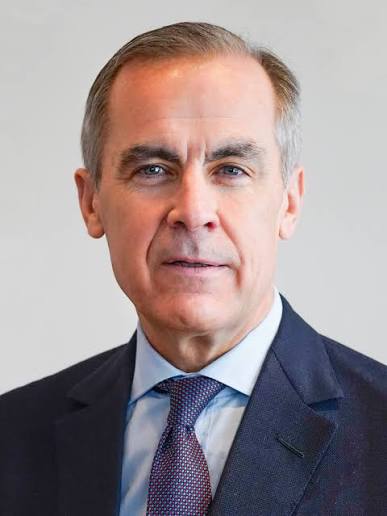John Thune Sounds Warning: Shutdown Possible If Demands Don’t Dial Back
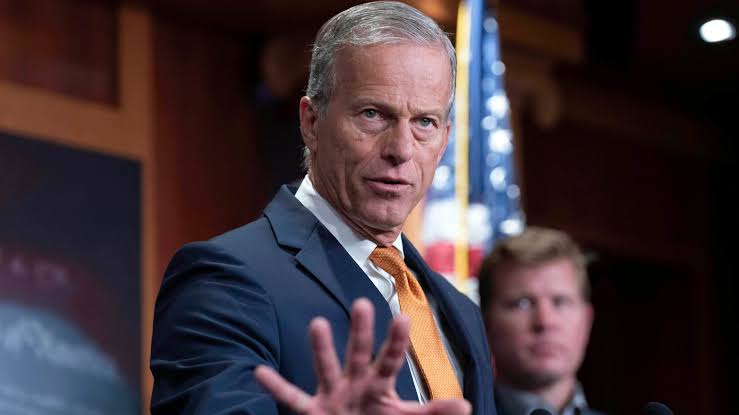
Thyun says that Democrats will have to “dial” their demands to immediately expand health insurance subsidy and reverse health. Today we will discuss about John Thune Sounds Warning: Shutdown Possible If Demands Don’t Dial Back
John Thune Sounds Warning: Shutdown Possible If Demands Don’t Dial Back
As the U.S. edges closer to its fiscal deadline, Senate Majority Leader John Thune is issuing what many see as a stern warning: unless Democrats scale back their demands, a federal government shutdown could become inevitable. The warning is rooted in deep partisan divisions over health care, appropriations, and governance strategy, set against the backdrop of multiple deadlines, procedural hurdles, and escalating rhetoric on Capitol Hill.
Thune’s message adds another layer of tension to an already fraught budget fight, suggesting that compromise may be slipping further out of reach. In this article, we explore the context of his warning, the issues at stake, the political dynamics pushing both sides, possible scenarios ahead, and what this all means for governance and the American public.
The Context: Fiscal Deadlines and Budget Battles
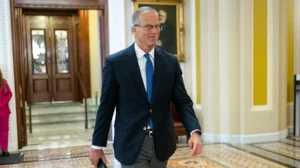
The Nature of the Funding Impasse
Every fiscal year, Congress must pass 12 appropriations bills (or a continuing resolution) to fund federal agencies and operations. Failure to do so by the deadline triggers a partial or full government shutdown. In practice, a stopgap or “continuing resolution” (CR) is often used to buy time—provided both parties agree on its terms.
In 2025, the deadline looms ominously. Republicans control both the House and Senate, but lack a filibuster-proof majority in the Senate (i.e., they need 60 votes to end debate). Thus, bipartisan cooperation is essential. Thune and other GOP leaders have pushed for a “clean” CR—i.e., a short-term extension without policy riders—as the most viable path forward.
Key Flashpoints: Health Care and Subsidies
A central dividing line is health care. Democrats are demanding an immediate extension of Affordable Care Act (ACA) insurance subsidies (i.e., tax credits that help lower-income Americans pay premiums) and the rollback of certain health-policy provisions from a recent Republican tax bill. Thune has been vocal in rejecting those demands as politically “unrealistic.”
Republicans, however, argue that to extend these subsidies without reforms would be fiscally irresponsible, and that Democrats are using them as leverage tied to the broader budget fight.
The House “Clean” Bill and Senate Standoff
In the House, GOP leaders passed a seven-week clean CR (i.e. funding extension without added policy changes) to push the burden onto Senate Democrats. But in the Senate, the measure faces steep resistance: it would require about seven Democratic senators to break with their party and join Republicans to reach the 60-vote threshold.
Thune’s warning comes amid this logjam, suggesting he sees little room for further concession, and signaling a willingness to let the process play out—with all its risks.
Thune’s Warning: What He’s Saying—and Implying
“Dial Back” Democratic Demands
Thune has repeatedly asserted that the shutdown is still avoidable—but only if Democrats dial back their demands. He described their demands regarding health care subsidies and tax-bill reversals as “unserious” in their current form.
He argued that negotiation “off-ramps” still exist, but the present position Democrats are taking is unlikely to get the parties to a deal. Thune stated:
“I’m a big believer that there’s always a way out … But I don’t think that the negotiating position … that the Democrats are trying to exert here is going to get you there.”
He Raises the Specter of Shutdown
Though he stops short of fully embracing a shutdown scenario, Thune warns that absent changes, Congress is “probably plunging forward toward the shutdown.” He frames the situation as conditional: the shutdown is not yet certain, but imposed demands make it more likely.
He also declined to outright condemn a White House memo on mass layoffs, calling the situation “hypothetical”—though he acknowledged that many expected such plans from the Office of Management and Budget, run by Russ Vought.
Political Signaling and Strategy
Thune’s tough posture serves multiple strategic purposes:
-
Pressure on Democrats: By placing the onus on them to back down, he shifts blame in case of a shutdown.
-
Internal GOP Discipline: He asserts a boundary to donor and base expectations—governance, not surrender.
-
Public Messaging: He is positioning the GOP as trying to avoid closure, while casting Democrats as obstructionist.
One of his rhetorical questions: “What would eight Democrats be willing to support?”—suggesting he knows compromise will require defections in the Democratic caucus.
Political Dynamics and Constraints
Senate Arithmetic & the Filibuster
Even though Republicans hold the majority in the Senate, they lack a supermajority. That means they cannot pass a CR unilaterally; they need some Democratic support. Two Republicans (Lisa Murkowski and Rand Paul) have already signaled opposition to the clean CR, further raising the threshold. Democrats can use Senate rules (filibuster) or procedural delays to block or reshape proposals.
Internal Party Pressures
Democrats are threatened from the left flank. Many progressive voices demand stronger resistance to GOP health care cuts or tax policies, limiting leaders’ flexibility. Thune has suggested that pressure from the far-left wing is contributing to the impasse.
Republicans, meanwhile, face pressure from conservative and fiscal hawk elements who demand strict spending control and oppose seeming concessions. Some GOP senators are wary of an open-ended subsidy extension.
The White House Role & Mixed Signals
President Trump canceled a scheduled meeting with Democratic leaders Chuck Schumer and Hakeem Jeffries, citing the intransigence of their demands. This raises questions about whether the executive branch is seeking negotiation or confrontation.
Additionally, a White House memo from the OMB advised federal agencies to prepare for mass layoffs if funding lapses—a move Democrats denounced as intimidation. Notably, Thune declined to overtly criticize that memo, instead labeling it hypothetical.
Public Perception & Political Risks
Shutdowns are deeply unpopular with the public. In past episodes, the party perceived to bear responsibility has suffered in opinion polling. Republicans likely believe they can frame the narrative as “we tried to keep the government open” if Democrats block compromise. But political winds are unpredictable, especially if services halt or federal employees lose pay.
Possible Scenarios Ahead
Given the dynamics, several possible outcomes could unfold. None are guaranteed, but each has pros, cons, and uncertainty.
1. Clean Continuing Resolution Passes (Short-term Fix)
In this scenario, a pure CR (no policy riders) passes for a few weeks (seven weeks is the current House proposal) to maintain funding while negotiations proceed. Thune has framed this as the preferable path.
Pros: Avoids immediate disruption, buys time, keeps agencies open, and lets negotiations continue.
Cons: Demands Democrats break ranks; may anger constituents if policy issues are deferred indefinitely.
2. Shutdown Occurs (Partial or Full)
If no agreement emerges, some or all parts of government may be forced to close. Some programs deemed “nonessential” would halt, federal employees potentially furloughed, and public services disrupted.
Pros (for hardliners): Uses leverage, demonstrates seriousness, appeals to base seeking maximal pressure.
Cons: Public blowback, pain for federal workers, economic ripple effects, political risk for both parties.
3. Compromise Deal Incorporating Some Demands
A middle path: Republicans agree to a limited extension of health subsidies or moderate policy changes in exchange for Democratic votes. This could require serious concessions.
Pros: Could end the crisis, restore stability, and shield both parties from worst-case blame.
Cons: May alienate hardliners on both sides, demand trade-offs, and be seen as capitulation by some base elements.
4. Piecemeal or Targeted Funding Bills
Instead of a blanket extension, the Senate could try passage of individual appropriations bills for select departments or essential functions. Thune mentioned this possibility contingent on bipartisanship.
Pros: Keeps most government operations going, isolates controversial parts.
Cons: Requires multiple negotiations, time, and agreement—not easier than a CR.
Implications & Stakes
For the Government and Services
A shutdown means that agencies deemed nonessential will halt, affecting permits, processing, regulatory functions, national parks, and more. That disruption has real cost—not just financially, but in public faith in governance.
Additionally, the OMB memo suggests some layoffs could be permanent unless funding is restored.
For Health Care and Consumers
Millions rely on ACA subsidies to afford insurance premiums. If subsidies lapse or are cut, those individuals could see substantial premium hikes. Thune and others have acknowledged this risk in their remarks.
Moreover, efforts to roll back health-related provisions of past legislation would deepen partisan conflict and may provoke legal challenges or policy uncertainty.
For Politics & Public Opinion
If a shutdown occurs, both parties will scramble to control the narrative. The party with the better messaging, or the one perceived as more cooperative, could gain advantage in public opinion.
For Republicans, Thune’s positioning attempts to inoculate them: “we tried to keep the government open, but the other side refused.” For Democrats, the counter would emphasize protecting vulnerable Americans (e.g., via subsidies) and resisting what they view as reckless cuts.
However, shutdown fatigue is real. The public dislikes the disruption and typically blames the party seen as uncompromising.
For Future Governance
This standoff may set precedents for how Congress handles future funding deadlocks, the use of clean CRs, and the willingness of moderates to break party ranks. If Democrats remain rigid or Republicans push too hard, future gridlock is more likely.
Critiques & Risks in Thune’s Approach
While Thune’s warning is forceful, it also carries risk.
-
Overplaying hand: Threatening a shutdown may embolden Democrats to dig in rather than retreat.
-
Uncertainty in Democratic defections: Counting on defections is speculative; if too few Democrats break rank, Thune’s strategy may fail.
-
Backlash from public: If services stop or employees are furloughed, public anger may turn harshly against both parties, particularly those perceived as instigators.
-
Internal GOP dissent: Some Republicans already oppose the clean CR; further fractures could undermine leadership.
-
Policy consequences: A shutdown could delay or reverse important regulatory and oversight tasks, harming long-term governance.
What to Watch: Key Indicators in the Coming Days
-
Senate Democratic votes: Which Democrats signal willingness to support a clean CR?
-
White House engagement: Will Trump return to negotiations or continue signaling refusal?
-
Messaging shifts: Whether Republicans or Democrats begin adjusting tone, offering concessions, or making threats.
-
Media & public reaction: How coverage frames responsibility, and whether shutdown anxiety impacts public sentiment.
-
Procedural maneuvers: Filibuster threats, parliamentary maneuvers, or amendments may shift momentum.
-
Scheduling deadlines: As time runs out, whether any last-minute deals or filibuster compromises emerge.
Conclusion
John Thune’s recent warning functions as both a signal and a threat: he is signaling that the GOP is not willing to accede to what they consider untenable demands, and threatening that a shutdown is increasingly plausible unless Democrats yield ground. But the push-and-pull remains far from resolved.
The intricate arithmetic of the Senate, partisan pressures, leadership dynamics, and the looming public costs make this moment particularly volatile. A successful resolution will likely require strategic flexibility, political risk-taking, and, above all, a degree of political courage from both sides.
For now, the question Thune poses—“will Democrats dial back their demands?”—may become one of the defining lines of battle in U.S. governance in 2025. Whether that answer comes in consensus or shutdown remains to be seen.
How useful was this post?
Click on a star to rate it!
Average rating 0 / 5. Vote count: 0
No votes so far! Be the first to rate this post.
About the Author
usa5911.com
Administrator
Hi, I’m Gurdeep Singh, a professional content writer from India with over 3 years of experience in the field. I specialize in covering U.S. politics, delivering timely and engaging content tailored specifically for an American audience. Along with my dedicated team, we track and report on all the latest political trends, news, and in-depth analysis shaping the United States today. Our goal is to provide clear, factual, and compelling content that keeps readers informed and engaged with the ever-changing political landscape.
